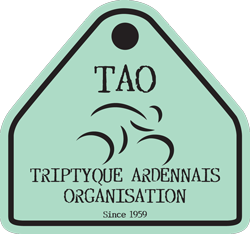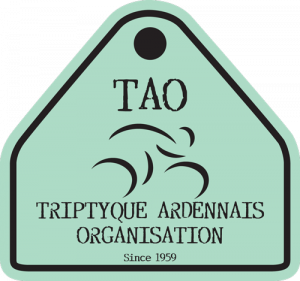Unlocking Symbols: From Greek Mythology to Modern Imagery
1. Introduction: The Power of Symbols in Human Culture
Symbols are universal tools through which humans have expressed complex ideas, beliefs, and values across eras. From ancient cave paintings to digital icons, symbols encapsulate shared understandings that transcend language barriers. Their significance lies in their ability to convey moral lessons, spiritual beliefs, and cultural identities efficiently and powerfully.
Over thousands of years, symbols have evolved alongside human civilizations. What once served as sacred signs in rituals now permeate modern branding, fashion, and media. This article explores this fascinating journey, focusing on iconic examples like the Eye of Medusa, illustrating how ancient symbols adapt and thrive in contemporary visual language.
Contents
- The Origins of Symbols in Greek Mythology
- The Symbolic Language of Greek Mythology
- Transition from Myth to Modern Imagery
- The Multifaceted Meaning of the Eye of Medusa in Modern Contexts
- The Mechanics of Symbolism: From Visuals to Concepts
- Psychological and Cultural Impact of Medusa’s Imagery
- Beyond Myth: Other Symbols and Their Modern Echoes
- Practical Applications in Modern Media and Design
- Conclusion: The Enduring Legacy of Symbols
2. The Origins of Symbols in Greek Mythology
In Greek mythology, symbols played a crucial role in conveying complex narratives and moral lessons. They functioned as visual shorthand that communicated deeper truths about gods, heroes, and the cosmos. Mythological symbols served as narrative devices, embedding moral, spiritual, and cultural values into stories that were passed down through generations.
Key symbols such as Medusa and the Gorgons embody specific meanings. Medusa’s face, with its serpents, represented danger and chaos but also served as a protective emblem. The Gorgons’ imagery was feared and revered, reflecting the duality of danger and divine power. These symbols were not mere decoration but carried moral messages about hubris, divine retribution, and the limits of human ambition.
Examples of mythological symbols and their meanings:
- Medusa and the Gorgons: Symbols of danger, transformation, and protection.
- Ouroboros: Represents eternity and cyclic renewal.
- The Ankh: Signifies life and immortality.
3. The Symbolic Language of Greek Mythology
Medusa’s image is one of the most potent symbols in Greek mythology, embodying danger, protection, and transformation. Her petrifying gaze was believed to turn onlookers to stone, a powerful metaphor for the destructive potential of wrath or chaos. Conversely, her head was also used as a protective amulet, warding off evil in various ancient cultures.
The mechanic of petrification acts as a metaphor for power—both the capacity to paralyze enemies and the potential for profound change. Perseus’s victory over Medusa, aided by his mirrored shield, exemplifies overcoming danger through intelligence and reflection. This act symbolizes the triumph of insight and strategy over brute force, a lesson echoed in countless stories beyond myth.
The significance of Perseus’s mirrored shield:
Using a mirror allowed Perseus to avoid direct eye contact, demonstrating how wisdom and perception are vital in confronting danger. This approach highlights the importance of self-awareness and strategic thinking—a lesson applicable in various modern contexts, from conflict resolution to cybersecurity.
4. Transition from Myth to Modern Imagery
Ancient mythological symbols have been continuously reinterpreted and adapted in contemporary art, media, and pop culture. The iconic imagery of Medusa, for example, has transitioned from a symbol of divine punishment to an emblem of empowerment and mystique. Artists and designers draw on these powerful archetypes to evoke emotional responses and convey layered meanings.
In fashion, Medusa’s visage appears on accessories and clothing, symbolizing both danger and allure. In films and video games, Medusa’s image often embodies themes of transformation, power, or cursed beauty. The “Eye of Medusa,” a modern adaptation, symbolizes protection and mystique, serving as a visual metaphor that resonates across various fields. For instance, some jewelry brands incorporate Medusa’s head to ward off evil, blending ancient symbolism with contemporary aesthetics—more details can be found at eyeofmedusa.uk.
5. The Multifaceted Meaning of the Eye of Medusa in Modern Contexts
Today, the “Eye of Medusa” serves as a versatile symbol with multiple layers of meaning:
- Protection: Many use Medusa’s image as a talisman to ward off evil and curses, echoing ancient practices where her head was used as a protective amulet.
- Reflection and Insight: The “mirror” aspect signifies self-awareness, truth, and the importance of perception. It encourages viewers to confront their inner selves and see beyond superficial appearances.
- Hidden Treasures and Allure: Medusa’s association with gold and riches — as myth suggests her head was once a source of divine power and treasure — links her to concepts of allure and the pursuit of valuable knowledge or success.
6. The Mechanics of Symbolism: From Visuals to Concepts
Visual symbols profoundly influence perception and behavior. They can evoke emotional responses, guide consumer choices, and shape cultural narratives. For example, brands often incorporate mythic symbols like the Medusa head to convey strength, mystery, and protection.
In entertainment, mythological motifs are used to deepen storytelling. Modern gaming mechanics, such as “free spins,” often draw inspiration from mythic symbols like the Gorgons’ gold, symbolizing opportunity and risk. The “petrify” mechanic, where characters freeze in place, echoes Medusa’s power—rooted in her mythological ability to turn onlookers to stone. This continuity illustrates how ancient symbols inform contemporary game design and narrative structures.
7. Deep Dive: The Psychological and Cultural Impact of Medusa’s Imagery
Medusa embodies a profound duality: she is both a figure of horror and a symbol of beauty. Her image prompts reflection on themes of power and vulnerability, grace and monstrosity. Psychologically, her gaze can evoke feelings of unease, fascination, or empowerment depending on context.
« Medusa’s myth reveals the complexities of human perception — beauty intertwined with horror, strength with vulnerability. » — Cultural Psychologist
Culturally, Medusa has evolved from a figure of fear to a feminist icon representing resilience against victimization. Her image’s unsettling yet captivating nature is linked to the “Uncanny Valley” phenomenon, where familiar yet disturbing features evoke strong emotional responses, making her gaze both compelling and unsettling.
8. Beyond Myth: Exploring Other Mythological Symbols and Their Modern Echoes
Many cultures have rich mythological symbols that continue to influence modern visual language. The Ouroboros, a serpent eating its tail, symbolizes cyclicality and eternity, while the Ankh, originating from Ancient Egypt, signifies life and immortality. These symbols are reinterpreted in contemporary art, logos, and media, often emphasizing their core meanings while adapting to new contexts.
Understanding the historical and cultural background of these symbols enhances our ability to decode their modern usage. For example, the Ouroboros appears in modern branding and tattoos to symbolize renewal, linking ancient beliefs with personal or corporate narratives.
9. Practical Applications of Mythological Symbols in Modern Media and Design
In branding, mythological symbols are powerful tools to evoke deep-seated associations. Logos like Medusa’s head communicate strength and protection, appealing to consumers seeking empowerment. Visual storytelling in films and games often employs these symbols to add layers of meaning—think of characters embodying mythic traits or relics representing ancient power.
Game mechanics frequently draw on mythic symbolism. For instance, “free spins” in slot machines can be linked metaphorically to Gorgon’s gold—an opportunity that’s both alluring and risky. Crafting symbols that evoke layered meanings enhances audience engagement and emotional resonance.
10. Conclusion: The Enduring Legacy of Symbols from Mythology to Today
Throughout history, symbols like Medusa’s head have traveled from mythic narratives to modern visual language, embodying complex ideas that continue to resonate. Their power lies in their ability to communicate universal themes—danger, protection, transformation, and insight—across generations and cultures.
Understanding these symbols enriches our interpretation of contemporary art, media, and branding, revealing the layered messages embedded within. Exploring mythological symbols offers a window into human psychology and cultural values, encouraging ongoing curiosity and study.
For those interested in how ancient symbols are reimagined today, resources like eyeofmedusa.uk showcase modern adaptations of timeless motifs, illustrating their relevance and appeal.





